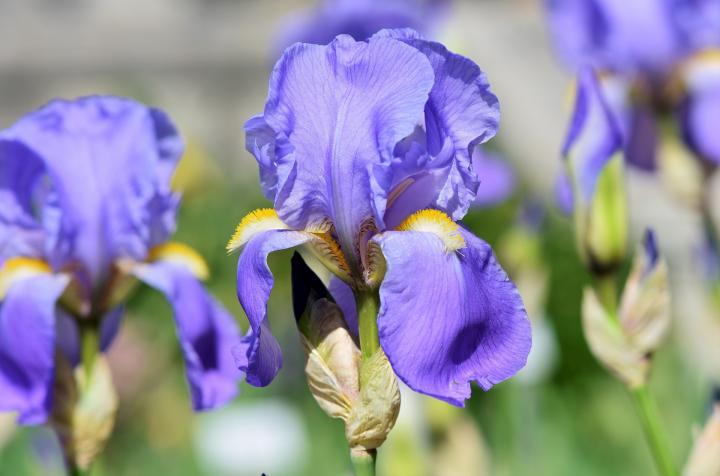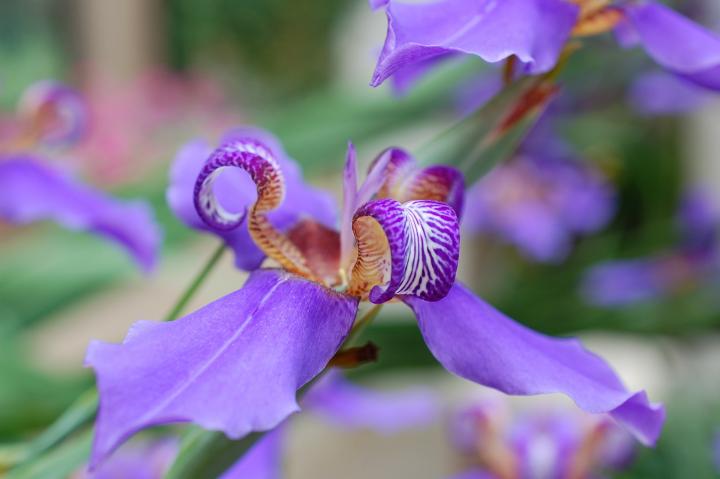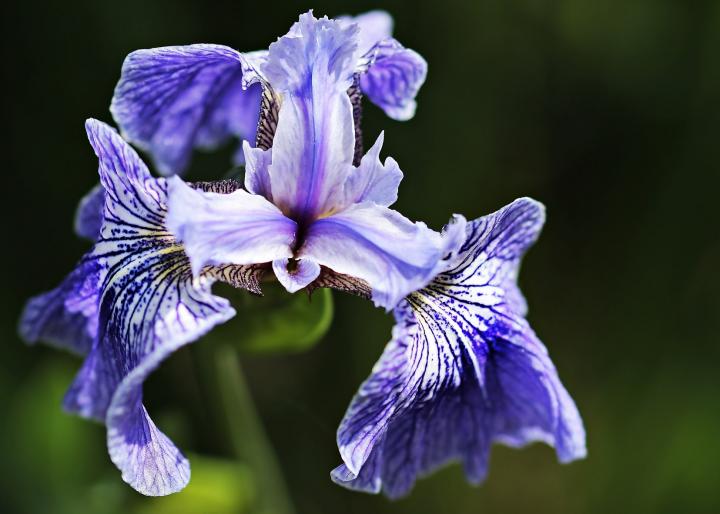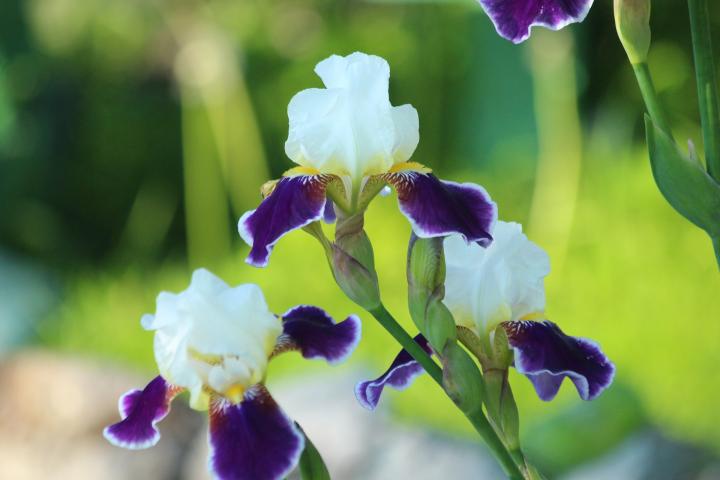
Planting, Growing, and Caring for Irises
The Almanac Garden Planner - Use It Free for 7 Days!
Plan your 2025 garden with our award-winning Garden Planner.
The tall bearded irises, Iris germanica, come in many flamboyant colors. They are generally planted in the fall. Rebloomers (remontant) varieties include:
- ‘Immortality’: fragrant white flowers that appear in early summer and again in late summer; hardy to Zone 4
- ‘Feed Back’: fragrant dark purple flowers; Zones 4 to 9
- ‘Earl of Essex’: white flowers, with purple edging; Zones 3 to 10
- ‘Jennifer Rebecca’: mauve pink flowers; Zones 4 to 9

Credit: Pixabay
Siberian irises, I. sibirica, also come in a range of colors. They have a more delicate beauty than the stately bearded irises, but are equally as rugged. They also tend to be more pest and disease resistant.
- ‘Blueberry Fair’: ruffled blue flowers; Zones 3 to 8
- ‘Fond Kiss’: white flowers with pink flush; Zones 3 to 8

Credit: Pixabay.
Japanese irises, I. ensata, bear huge, flat blooms. These heavy feeders thrive on moisture during the growing season and do well around ponds; move to drier ground for fall and winter.
- ‘Coho’: pink flowers with golden flush; Zones 4 to 9
- ‘Variegata’: dark purple-reddish flowers; Zones 4 to 9

Credit: Pixabay.
ADVERTISEMENT
I purchased an iris and the large rhizome is rotting but has smaller plants attached. Can I cut them off and plant them ? Also is there something I can treat them with?
It’s not unusual for the central, or main, rhizome to lose its vigor after having developed “baby” rhizomes beside/attached to it. So, yes, you can discard it. If you are dividing the remaining cluster, see below (the next Q/A) for specific guidance.
Our irises grow long stalks and have blooms. Just as soon as they bloom, then they all fall down. Why? They do this year after year.
There may be a few reasons for this:
• the clump needs to be divided; this is best done in/around late July: Cut foliage back two-thirds, leaving a short fan of leaves. Lift the rhizomes and remove/cut off any rot. Using a sharp, clean knife, cut the rhizome, making sure it has some leaf fan and roots attached. Replant, covering with 1/2 inch of soil. If the central portion of the rhizome has no root or foliage, discard it.
• shade on one side causes them to reach for sun and so lean, eventually falling.
• fertilizer high in nitrogen has been provided; this cases foliage growth at the cost of flowers.
Can one brew the leaves for tea? I have purple irises and they smell like root beer!
Hi Alicia,
The leaves of irises are toxic to humans and so should not be made into tea. It may seem enticing when a leaf or flower smells like something else that is edible, but never eat anything that you cannot completely guarantee is not poisonous.
I am not sure what type of flower this is, it looks like an iris , but not like others. I dont know how to upload a picture, but it is my profile on facebook.
Is a seed pre-emergent indicated for an iris bed? I keep weeding out the iris bed, but inevitably seeds of weeds end up in the ground, and weeds grow all over again. I was thinking of putting some kind of seed pre-emergent like Preen on the ground in between the irises ... Any advise or experience? Thank you.
Mulch is the most common recommendation for controlling weeds in iris beds. No more than 2 inches to avoid disease problems. But there are herbicides, if you want to use them. We would noto would normally send you to the coop extension service page (and we will) but we found that the University of Georgia service has the information clearly arranged; see here: http://extension.uga.edu/publications/detail.cfm?number=C867-8
To contact the cooperative extension service nearest you for more or, possibly, other information, click here and choose your state: http://www.almanac.com/content/cooperative-extension-services
Thank you for your help! Will do!












